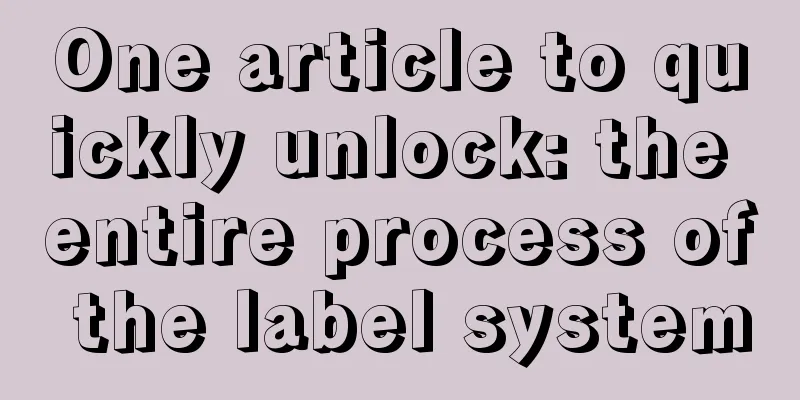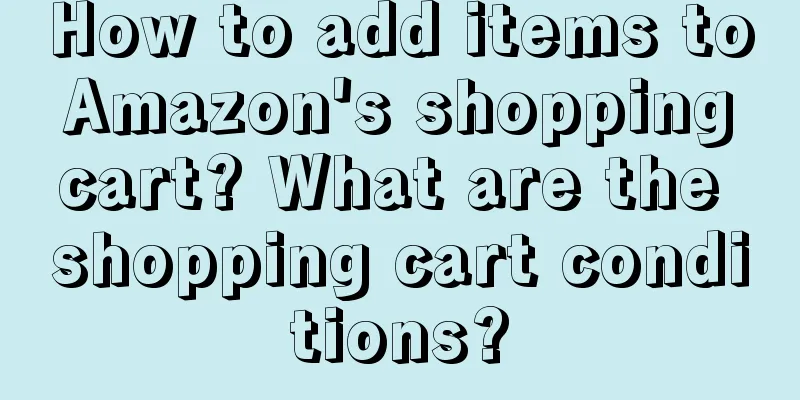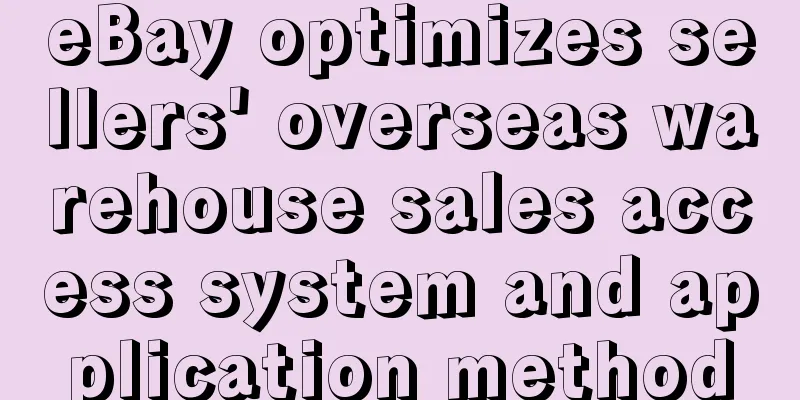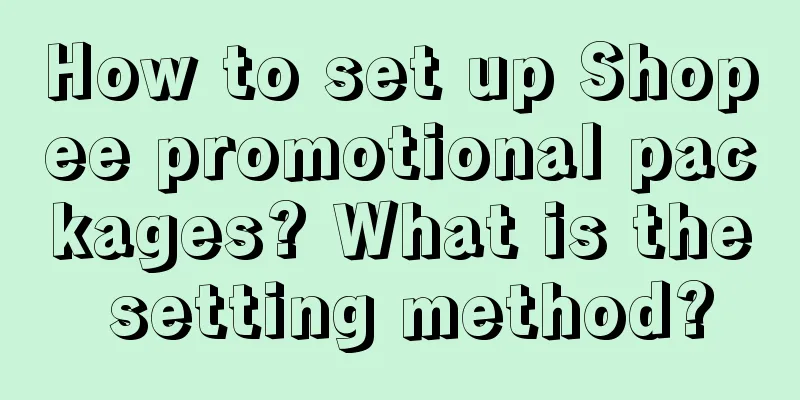One article to quickly unlock: the entire process of the label system

The label system is definitely the most worthwhile thing to do at the beginning of the year in the annual data analysis work. This is because it is related to all work, including business analysis, delivery analysis, user portraits, recommendation strategies, product operations, etc. All of them rely on labels. If the labeling system is well designed, there will be enough materials for subsequent analysis and experience can be accumulated. If the labeling system is poorly designed, not only will the effort be wasted, but there will also be nothing to rely on when doing in-depth analysis later. So how do we do it? Let me share with you briefly today. 1. Common mistakes in labeling systemThe most common mistake is to put all kinds of things into a label.
Not to mention, when labeling users, "high value", "potential", "like XX" are randomly attached. Even similar names such as "high value", "high quality" and "high quality" exist at the same time. These bad habits can be seen everywhere when doing user portrait projects. People often boast to me: "Teacher Chen, we are so awesome, we have added more than 3,000 user tags..." At this time, you just need to ask him:
He was dejected and said, "I'm still exploring how to apply it..." and then ran away. Why? Because these tags are just a bunch of dimensions lying in the database. If you want to use them for business, you must first consider: what are the business needs and why they need to use tags. 2. Breakthrough, start with understanding needsWhen building tags, there are at least 3 completely different types of requirements. Management: Rapidly identify the need for value. Management is most afraid of seeing hundreds of pages of PPT reports. Tags can effectively refine business meaning and identify the most critical factors. for example:
In this way, when performance fluctuates, management can see at a glance: Oh, it’s the problem in XX place. This saves a lot of time. Operations department: Find the need for planning inspiration. The operations department likes to ask:
These questions, in the final analysis, all revolve around the “five elements of planning”. It would be great if the answers to business questions could be clearly told through labels (rather than fragmented data) (as shown in the figure below). Frontline employees: The need for clear answers to questions. Frontline employees face customers directly, and they know user behavior and needs much better than data analysts thousands of miles away. What frontline employees need is not: "Teach me how to do it" (actually they can't teach me), but:
for example:
Such clear guidance is the best tool. After carefully understanding the business needs, you will find that: there is no need to label a large area. It is even more unnecessary to use a large area of labels for business use! Providing a small number of labels, cultivating business usage habits, and gradually building a complete system are the keys to project success. So, where do you start? 3. Sorting, start with the simplestNote that the difficulty of implementing the above three types of requirements is different. The easiest thing to achieve is the needs of frontline staff. In theory, you only need to label the activities, products, and articles that the frontline staff frequently searches for in a standard format and put them into the library (as shown below). But! This cannot meet the needs of the front line. Because it is difficult to search for information on the front line. For example, if 30 activities are launched online at the same time this month, there may be only two or three that are of interest to the front line. And the front line staff and customers often give them nicknames, resulting in strange search keywords. If you directly open the tag library for query, the usage rate is often low and the search accuracy is low. Therefore, the tools provided to the frontline can be further optimized:
Only in this way can the frequency of label use be increased, and there will be an opportunity to improve front-line efficiency. 4. Classification and identification value are the most importantThe second type that is easy to promote is labels that identify value.
Even if you do nothing else, you must prioritize creating these valuable identifiers. Common ones, such as:
(As shown below)
(As shown below) The only difficulty here is to popularize this concept among the management. It is very likely that the company has never done similar labeling before, and there is no consensus among the management on "what is a high-value user" and "what is a high-quality channel", so it may be difficult to mention it for the first time. However, as long as the company is not so stupid that it doesn't even know what its own products, channels, and users look like, it can gradually promote the application of labels. After all, reducing the pressure of reading reports and focusing on core issues are the common demands of everyone. 5. Explore and gradually achieve accuracyOf the three types of needs, the most difficult to meet are those of the operations department. Labels such as “like” and “preference” are very difficult to create.
Not to mention, even if it works, what proportion does the advertising copy, promotional offers, and user needs each account for? Therefore, if you want to do this clearly, you will need multiple iterations. The iterative method is to start from the area with more data and move to the area with less data. for example:
These extreme groups are usually the big contributors to performance, and they have a lot of data, so it is easy to summarize the rules. And when high consumption does not consume, and high activity does not convert, the business department will rush to find a solution, and can further verify the accuracy of the prediction by combining business actions. As for users who have very little data, they can first fry fish according to a fixed recommended route (as shown below) and combine it with business actions to test user needs and gradually improve the accuracy of prediction. VI. SummaryLabeling is extremely important. It is an important tool for quantifying qualitative factors and providing value judgments. It is a very basic construction. However, when doing labeling projects, it must be combined with business analysis (for management), activity support (for operations), and system tools (for the front line). You cannot just contribute in obscurity. Otherwise, everyone will think that you can quietly refine a furnace of elixirs, not participate in the process, and not use them. At the end, you will definitely be disappointed. Here is another extended topic, how to start from scratch and iterate high-quality labels. I will continue to share it later. Author: Down-to-earth Teacher Chen WeChat public account: Down-to-earth Teacher Chen (ID: gh_abf29df6ada8) |
<<: Douyin quietly creates a "family bucket"
>>: 3000 words of practical tips: online event planning template
Recommend
Can Amazon import taxes and fees be waived? What is the import tax rate?
When opening a store on Amazon, you need to unders...
4 modes, 7 content directions, factory owners can also do a good job on Douyin accounts
Factory owners shoot Douyin videos, which give the...
What are the disadvantages of the Linio platform? What are its advantages?
There are still many cross-border e-commerce platf...
Does Pop Mart need to tear off the “blind box” label?
This article mainly analyzes the current status of...
Do I need a business license to open a cross-border e-commerce store? How do I apply for one?
Cross-border e-commerce can be said to be the hott...
Can I cancel Amazon Prime after 30 days of trial? How to activate Amazon Prime?
Amazon's trial membership program has attracte...
If you don’t understand emotional marketing, you can’t be a brand CMO
Emotions and brands are closely linked in modern b...
What questions do you have about joining Shopee? FAQ
The first step to becoming a Shopee seller is to s...
"Copying" Brother Yang, a crazy business
Why can we always watch the live clips of big anch...
Is it easy to place orders on Shopee? How to place orders?
When you are doing cross-border e-commerce, you ge...
Private Domain Case | More than 1,000 targeted customers were added in 1 week, with a course attendance rate of over 85%. How did this adult education company do it?
Adult education is an industry that is constantly ...
How to receive payment through cross-border e-commerce? Super detailed operation method
As a way of starting a business, cross-border e-co...
B station live streaming has not gone viral in this year
Bilibili has joined the live streaming sales front...
Sudden change in consumption trend: Why are leading new consumer brands such as Yuanqi Forest, Zhong Xuegao, and Huaxizi beginning to lose their luster?
This article takes leading new consumer brands suc...
There are one million netizens who watch him begging for food every day
Do you know how homeless people beg for food? Rece...









